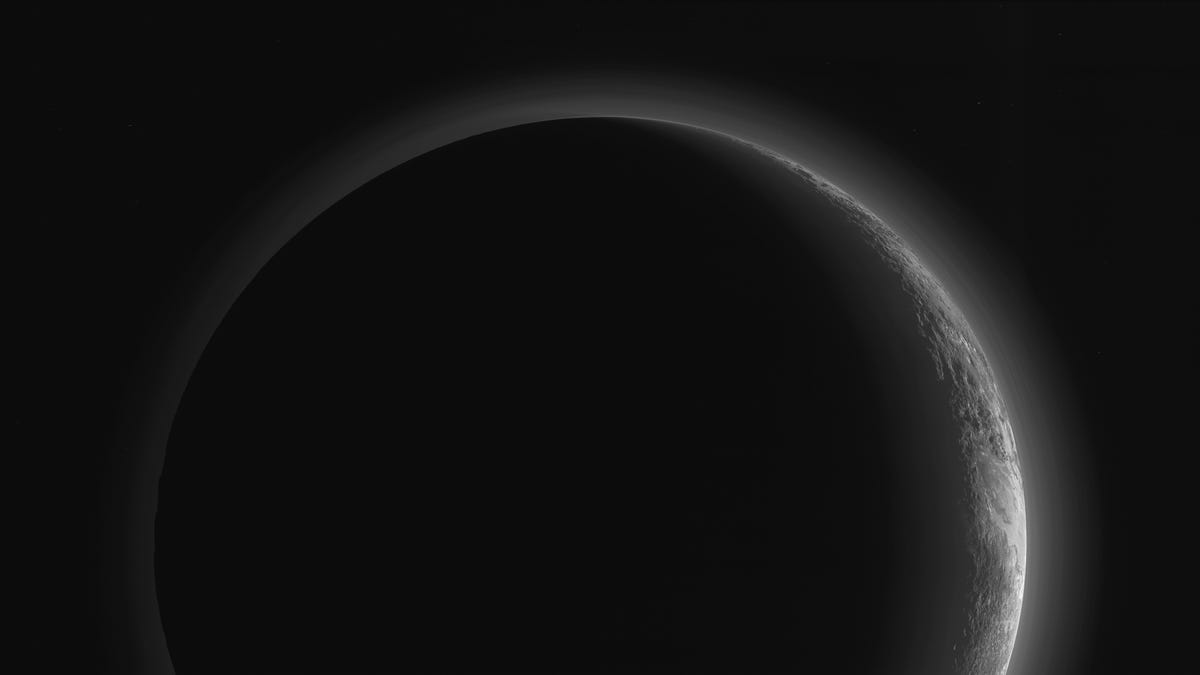Pluto's glowing crescent on full display in fresh NASA image
NASA's New Horizons looked back after its Pluto flyby and saw this stunning view of the dwarf planet's radiant crescent backlit by the sun.
Behold the latest piece of Pluto ephemera, a lovely full view of the dwarf planet's crescent.
Back on September 17, NASA released a partial backlit panorama, but the agency wasn't satisfied with just a slice of the space object. Scientists went back to work to produce the full view released Thursday showing most of the dwarf planet with a glowing crescent as the highlight.
The image was taken only 15 minutes after New Horizons' closest approach. It represents what the spacecraft saw as it headed away, taking a moment to look back and see the sunlight glinting off Pluto's curves. Surface formations of plains and tall mountains are visible along the day side.
NASA's New Horizons dove by Pluto back on July 14. It was the culmination of a nearly decade-long mission for the spacecraft, but it also marked the beginning of a massive year-long data dump. New Horizons may be moving onward through space, but scientists back on Earth have their hands full sorting through images and information sent back by the craft.
The fuzzy area around the crescent is the dwarf planet's atmosphere. "The backlighting highlights more than a dozen high-altitude layers of haze in Pluto's tenuous atmosphere," NASA notes. New Horizons took the picture from a distance of 11,000 miles (about 17,700 kilometers).
The intrepid spacecraft is likely on its way to a new mission. If an extension is approved, New Horizons will head deeper into the Kuiper Belt, a region of the solar system that extends from beyond Neptune's orbit. It's an area full of icy entities. A small object called 2014 MU69 would be the new target.
In the meantime, New Horizons will continue to send back images from the Pluto flyby and NASA's researchers will keep plenty busy processing and sorting through the information.


